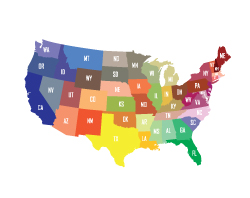Understanding Why: How Drunk Driving is Bad
How drunk driving is bad becomes clear when examining the devastating impact on victims, families, and communities. Alcohol impairs critical driving abilities including reaction time, judgment, and motor control. Every year, thousands of preventable deaths occur because drivers choose to operate vehicles while intoxicated.
This comprehensive guide explores the multifaceted dangers of drunk driving, from immediate physical risks to long-term legal and social consequences. You’ll discover why even minimal alcohol consumption dramatically increases accident risk and learn about the ripple effects that extend far beyond the initial incident.
Statistical Evidence: How Drunk Driving is Bad for Society
The numbers paint a stark picture of how bad is drunk driving for our communities. According to the National Highway Traffic Safety Administration (NHTSA), drunk driving accounts for approximately 28% of all traffic fatalities in the United States. This translates to nearly 11,000 deaths annually, meaning someone dies from drunk driving every 50 minutes.
The Centers for Disease Control and Prevention (CDC) reports that drunk driving causes over 230,000 injuries each year. These statistics represent real people – parents, children, friends, and community members whose lives are forever altered by preventable accidents. The Federal Bureau of Investigation (FBI) data shows the economic impact exceeds $44 billion annually in medical costs, property damage, and lost productivity.
Geographic Impact Distribution
Drunk driving affects both urban and rural communities, though rural areas experience higher fatality rates due to longer emergency response times and limited medical facilities. Holiday periods see significant spikes in drunk driving incidents, with New Year’s Eve, Fourth of July, and Labor Day weekend showing the highest rates.
Physical Consequences
Understanding drunk driving requires examining alcohol’s effect on the human body. Blood alcohol concentration of just 0.08% – the legal limit in most states – significantly impairs driving ability. At this level, drivers experience reduced muscle coordination, difficulty steering, and impaired ability to track moving objects.
Higher blood alcohol levels create exponentially worse impairment. At 0.15% BAC, drivers lose substantial muscle control and major loss of balance. Vision becomes blurred, and reaction times slow dramatically. These physical impairments directly contribute to the severity of drunk driving accidents.
The human toll extends beyond drivers themselves. Passengers, pedestrians, and other motorists suffer severe injuries including traumatic brain injuries, spinal cord damage, and permanent disabilities. Many survivors face years of rehabilitation, chronic pain, and reduced quality of life.
Legal Ramifications
The legal system clearly demonstrates how bad is drunk driving through severe penalties designed to deter impaired driving. First-time offenders face license suspension, substantial fines, and potential jail time. Many states require ignition interlock devices, mandatory alcohol education programs, and community service.
Repeat offenders encounter escalating consequences including felony charges, extended prison sentences, and permanent license revocation. Beyond criminal penalties, drunk driving convictions create lasting civil consequences. Insurance rates increase dramatically, employment opportunities diminish, and professional licenses may be revoked.
Professional and Personal Impact
Drunk driving convictions appear on background checks, affecting employment prospects in transportation, healthcare, education, and finance sectors. Professional licenses for doctors, lawyers, and other regulated professions face suspension or revocation. The stigma follows individuals for years, impacting relationships, housing applications, and community standing.
Final Thoughts: Drunk Driving Beyond Measure
How drunk driving is bad extends far beyond individual consequences to encompass family devastation, community trauma, and societal costs. The ripple effects touch emergency responders, healthcare workers, legal professionals, and countless others who deal with drunk driving’s aftermath. Prevention through education, designated drivers, and responsible alcohol consumption remains our strongest defense against these preventable tragedies.
Take Action Now: How Drunk Driving Can Be Prevented
Understanding how drunk driving is bad empowers you to make responsible choices and influence others. Share this information with friends and family, support local prevention programs, and always plan safe transportation before consuming alcohol. If you or someone you know needs legal guidance regarding drunk driving cases, visit 1800duilaws for expert assistance and support.
For qualified attorneys seeking exclusive drunk driving defense leads, visit our website to learn more about our specialized lead generation services.
Frequently Asked Questions About Drunk Driving Severity
1. How Bad Is Drunk Driving Compared to Other Traffic Violations?
Drunk driving is significantly more dangerous than other traffic violations, increasing crash risk by 7-10 times and accounting for nearly 30% of all traffic fatalities despite representing a small percentage of overall driving incidents.
2. How Drunk Driving Is Bad for Insurance Rates?
Drunk driving convictions typically increase insurance premiums by 80-100% and may result in policy cancellation, forcing drivers into high-risk insurance pools with substantially higher rates.
3. What Makes Drunk Driving Particularly Bad at Night?
Nighttime drunk driving combines alcohol impairment with natural vision limitations, fatigue, and reduced traffic visibility, creating especially dangerous conditions that significantly increase accident severity.
4. How Bad Are Repeat Drunk Driving Offenses?
Repeat drunk driving offenses carry exponentially worse consequences including felony charges, extended jail sentences, permanent license loss, and classification as a habitual offender.
5. How Drunk Driving Affects Families?
Drunk driving destroys families through wrongful death, financial devastation from medical bills and legal costs, emotional trauma, and long-term psychological effects on survivors and relatives.
Key Takeaways
- Deadly Statistics: Drunk driving causes 11,000+ deaths annually and injures over 230,000 people
- Physical Impairment: Blood alcohol levels of 0.08% significantly reduce driving ability and reaction times
- Legal Consequences: Convictions result in license suspension, heavy fines, jail time, and permanent records
- Economic Impact: Annual costs exceed $44 billion in medical expenses, property damage, and lost productivity
- Prevention Works: Designated drivers, ride-sharing, and responsible planning prevent 100% of drunk driving incidents








